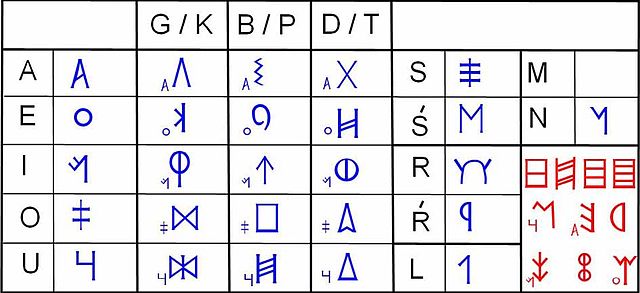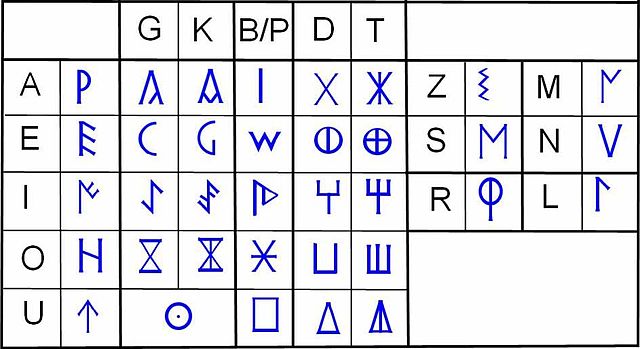Northeastern Iberian script
The northeastern Iberian script, also known as Levantine Iberian or Iberian, is a member of the epigraphic family of paleohispanic scripts located roughly in eastern Spain, concentrated in the northeast, and in Aquitaine of southern France. The term Levantine comes from an informal geographic designation, Levante, Spain, meaning generally the east of Spain, just as Levant means the east of the Mediterranean. The script is a type of writing, or graphemic representation, not a type of language. Linguistics does not apply except only incidentally.
Humboldt, a great scholar, author of the Vasco-Iberian Hypothesis, but, like any other human, not always right.
The young Manuel, dogged advocate of a theory he knew to be right.
A northeastern dual Iberian signary (Based on Ferrer i Jané 2005)
A northeastern non-dual Iberian signary.
The Paleohispanic scripts are the writing systems created in the Iberian Peninsula before the Latin alphabet became the main script. Most of them are unusual in that they are semi-syllabic rather than purely alphabetic, despite having supposedly developed, in part, from the Phoenician alphabet.
A possible southwestern signary (based on Rodríguez Ramos 2000).
Possible values of the southeastern Iberian signary (based on Correa 2004). Signs in red are the most debatable.
The proposed 'dual' variant of northeastern Iberian signary (based on Ferrer i Jané 2005).
A western Celtiberian signary (based on Ferrer i Jané 2005).







